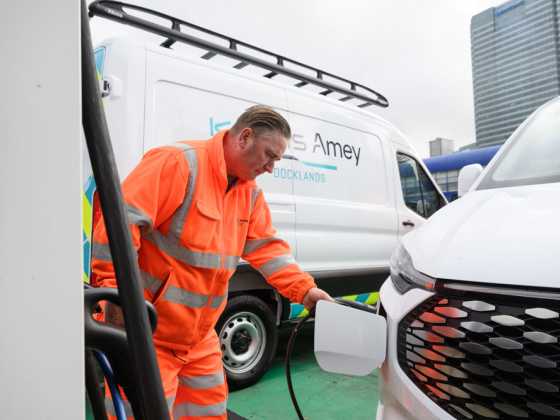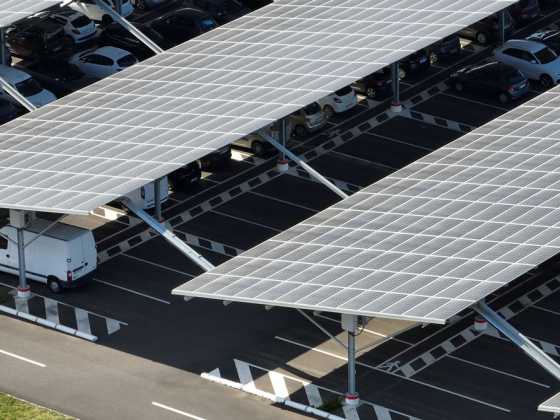The hazards of moving vehicles in the workplace
Hazards posed by a slow moving commercial vehicle is a major cause of failing to manage workplace transport safety correctly. Dedicated road safety campaigner Chris Hanson-Abbott OBE explains how employers can improve employee safety for those working with moving vehicles
 Forty years after I first started campaigning for better safety features on vehicles I am still shocked by the reluctance of certain employers to fit essential and readily available safety equipment to their fleets.
Forty years after I first started campaigning for better safety features on vehicles I am still shocked by the reluctance of certain employers to fit essential and readily available safety equipment to their fleets.
Accidents – avoidable accidents – are still happening. People still die or are horribly injured for want of driver-aids to visibility and pedestrian alerts. Sadly, many of the victims have been exposed to an accident simply by virtue of being at work – having relied on their employers for their safety while going about their duties.
Hazards
The first of the top three hazards facing workers is the failure to manage workplace transport safety, followed by falls from heights and dangerous equipment.
There are numerous hazards posed by a commercial vehicle – especially when moving at slow speed, turning left or reversing, for example. The catalogue of inexperienced young cyclists wiped out by long vehicles turning left and hapless pedestrians reversed over blindly, absent even any audible warning, is an indictment of how shameless some operators are.
In my view it is criminally negligent to order a driver to operate a vehicle knowing that he or she will be obliged to perform certain manoeuvres unsafely.
Inevitably, the driver is the first to face the blame and the personal consequences of an accident. How many operators are the first to put up their hand and admit their failure to foresee the hazards of the job which they ordered their driver to do? Very few I fear. This is unjust and unacceptable in today’s safety culture. I shall give my wholehearted backing to any driver whose employer moves to blame him/her for the consequences of being ordered to drive an unsafe vehicle.
Further to that I will support equally any driver who refuses to drive such an unsafe vehicle and suffers employer discrimination as a result.
Safety aid
Technology has moved on a lot from the days when I heard the world’s first reversing alarm in Tokyo nearly 40 years ago. Since then a host of vehicle movement safety systems have become available to prevent collisions all round a vehicle. The latest of these innovations is a 360-degree multi-camera system which gives the driver a bird’s eye view of a three metre footprint surrounding the perimeter of the vehicle – all visible on one screen in the blink of an eyelid.
This astonishing safety aid is not cheap, but it has trumped everything that has gone before it, including ultrasonic detectors that warn a VRU who is straying into a blind spot. These audibly alert both the driver and the VRU.
Reversing alarms have become ultra- sophisticated. They have become environmentally acceptable with the sound of falling water – this is directional so the listener always knows where the vehicle is.
All of this makes it even more frightening that some operators still refuse to pay for safety until a system is required specifically by law.
Fully equipping vehicles
A comprehensive range of safety systems is available off the shelf yet only a rear‑view mirror is required by law. Have you tried seeing the blind area behind a truck with one of those? And what about all the other blind spots?
The law is decades out of date while government fails to regulate where low-speed manoeuvring is concerned. It is absurd to assume, for example, that a trained banksman will always be available when a reversing manoeuvre is necessary.
All vehicles should be fully equipped for a lone driver to perform any manoeuvre safely – that is why the road safety campaign SteerSafe is calling for all commercial vehicles to be equipped with safety equipment appropriate to their use.
As the Health & Safety at Work Act stands, operators are in trouble should a deficiency of safety equipment lead to a personal injury. Surely, prevention before the event must be better than retribution after it?
That’s why SteerSafe wants to see the Health and Safety Executive empowered with the responsibility to define hazard areas and demand that operators make safety interventions as specified by the HSE inspector, as a condition of their operating licence.
Further information
brigade-electronics.com






